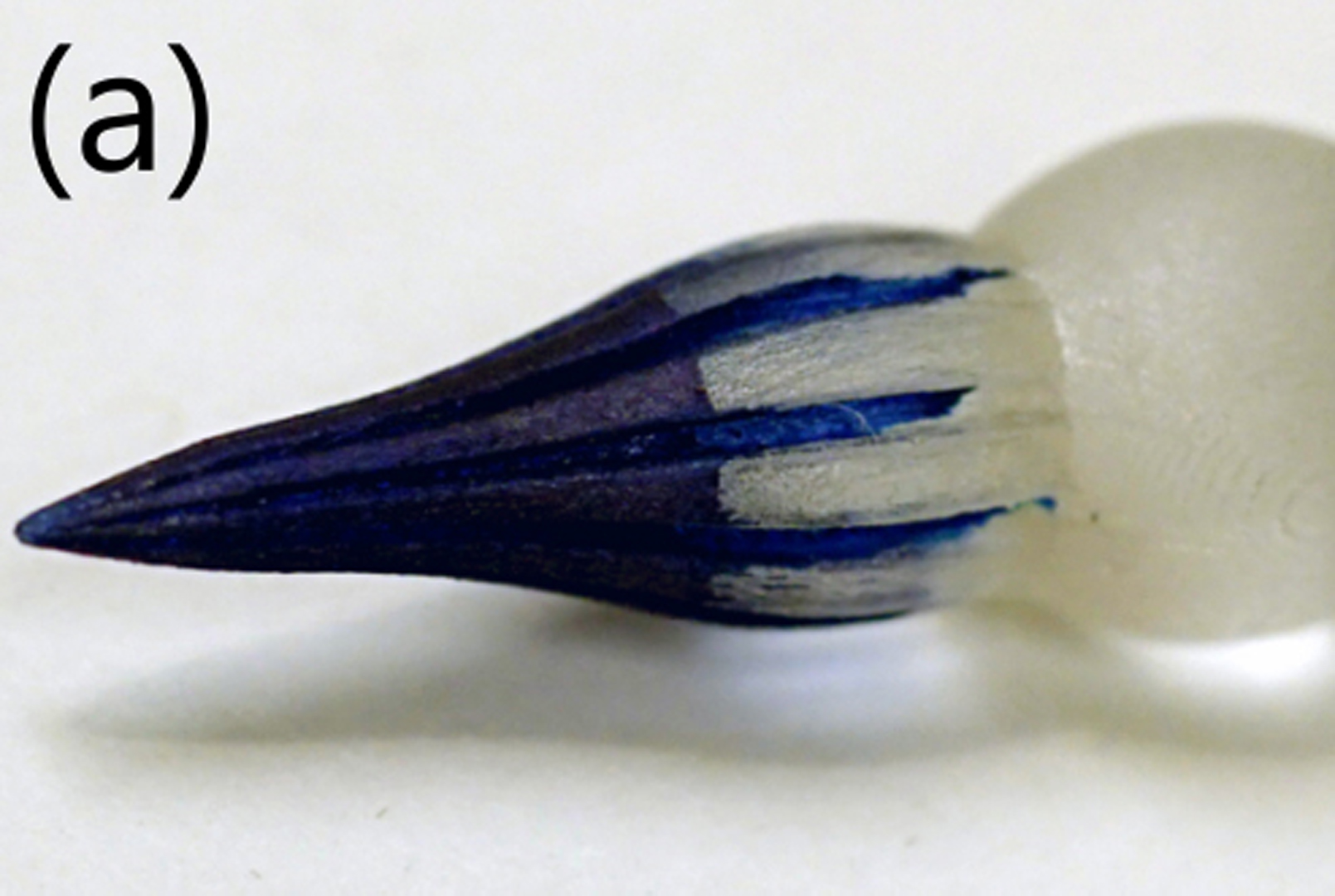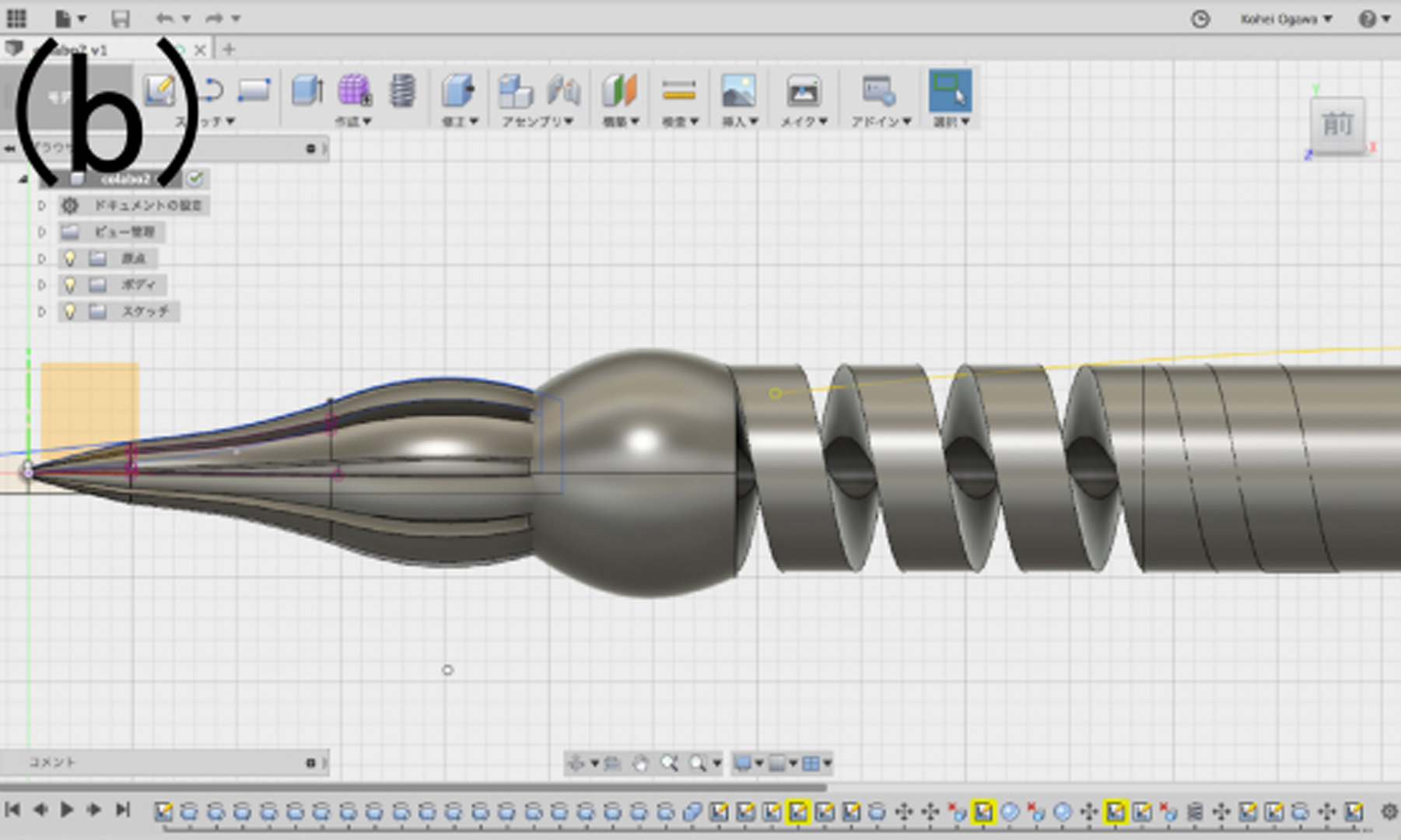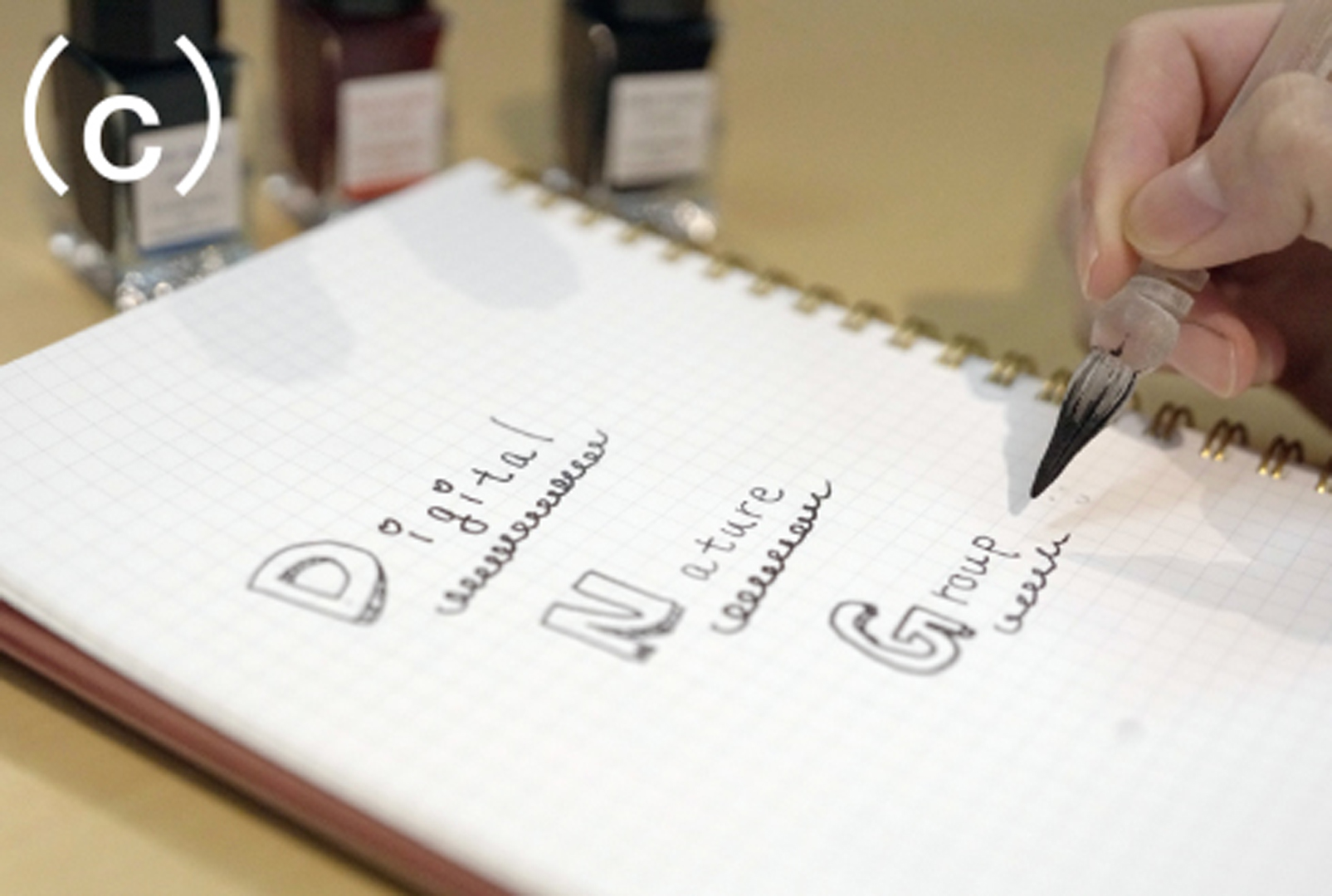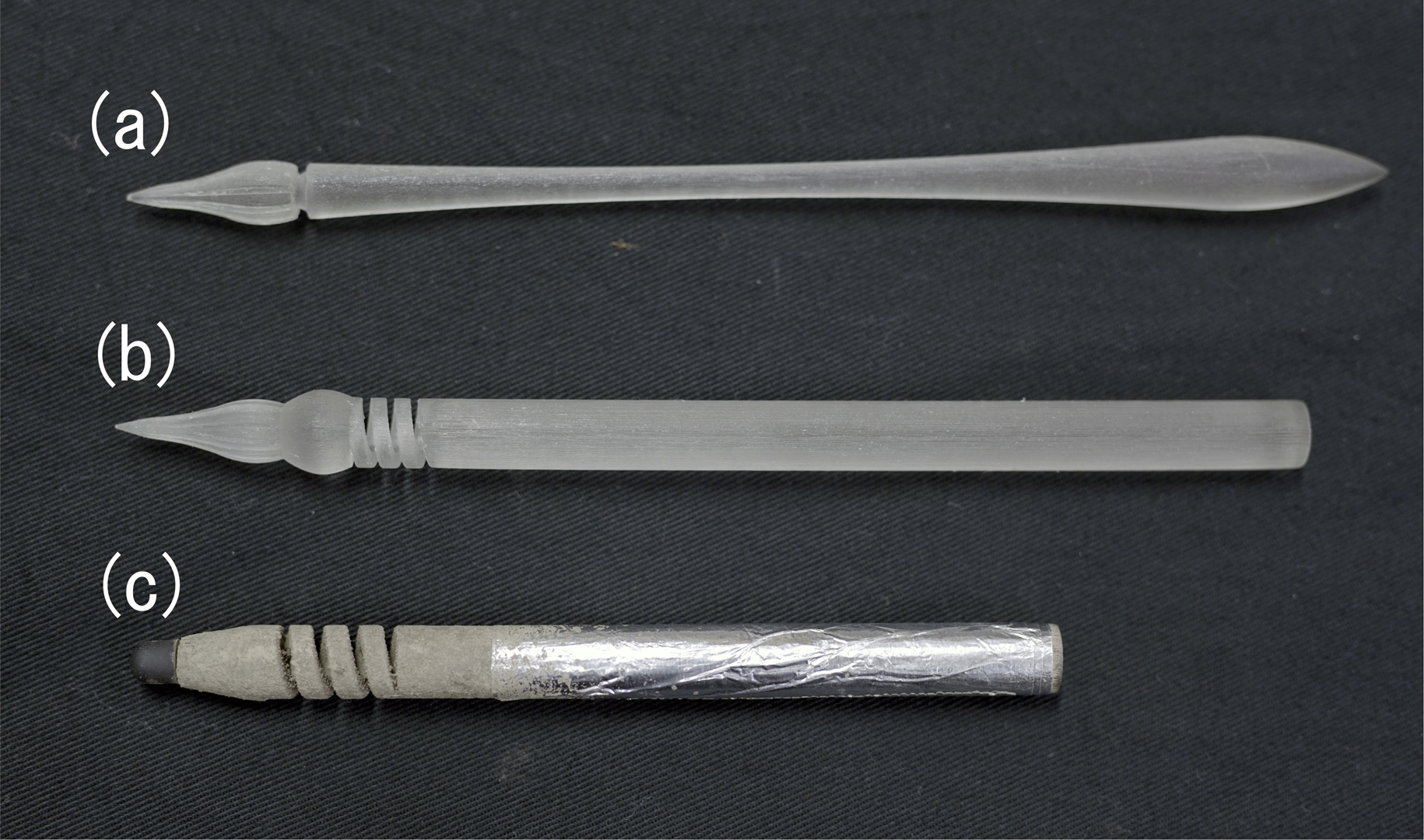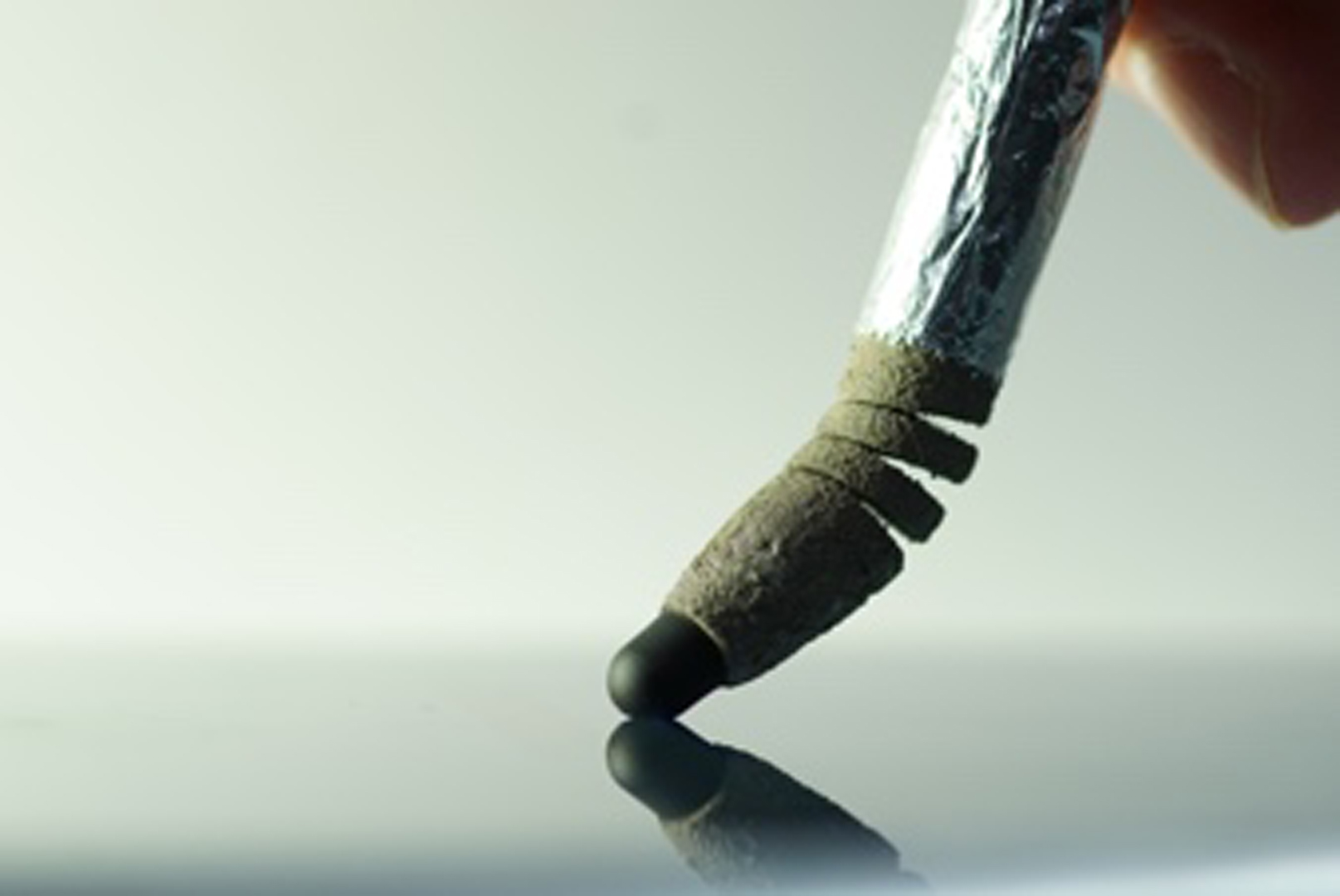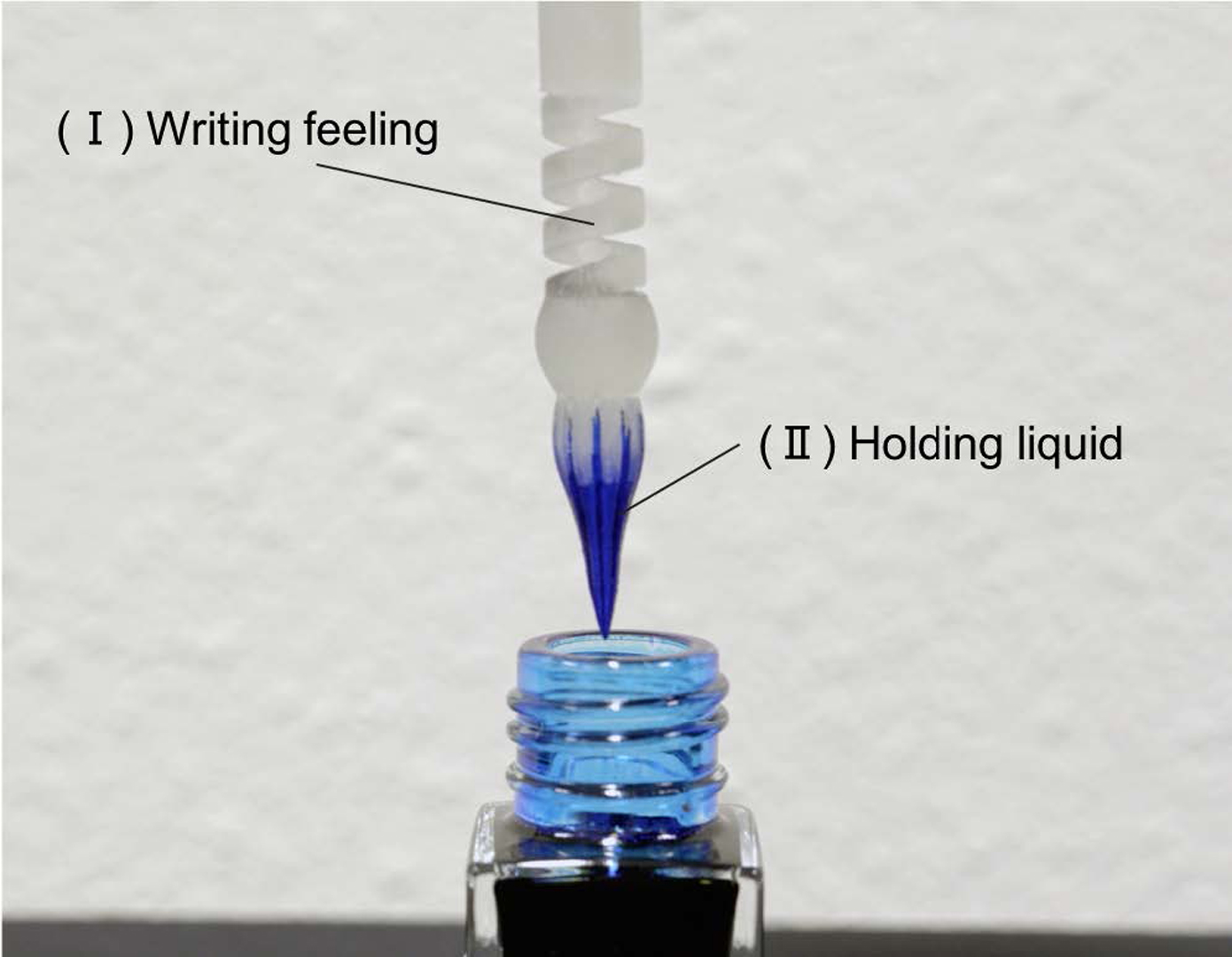“Design Method of Digitally Fabricated Spring Glass Pen” by Ogawa, Tanaka, Minagawa and Ochiai
Conference:
Type(s):
Entry Number: 06
Title:
- Design Method of Digitally Fabricated Spring Glass Pen
Presenter(s)/Author(s):
Abstract:
INTRODUCTION
In this study, We propose a method to develop a spring glass dip pen by using a 3D printer and reproduce different types of writing feeling. There have been several studies on different types of pens to change the feel of writing. For example, EV-Pen [Wang et al. 2016] and haptics pens [Lee et al. 2004] changes the feel of pen writing by using vibration. However, our proposed method does not reproduce tactile sensation of softness by using vibrations.
A pen is a part of our everyday life. Considering that there are so many types of pens available, there is a need to produce a pen suitable for individuals. A glass dip pen requires technology for its development. Glass dip pens, which were first developed in Japan, use the capillary phenomenon and require glass artisan skills for their development. Therefore, we developed our spring glass dip pen by imitating a glass dip pen using a 3D printer (Fig. 2(a)). Moreover, we reproduced a new feel of writing and softness by applying the structure of a spring pen in our design method [Tanaka et al. 2017], which could not be reproduced using a general glass dip pen (Fig. 2(b)).
Recently, stylus pens, which are used as digital terminals, have become popular. Generally, a commercially available stylus pen can only produce the feel of a hard touch when it touches the tablet screen. Therefore, we developed a soft touch pen, similar to a brush, with a spring pen’s structure using a 3D printer (Fig. 2(c)). The pen has many writing tastes, and there are various preferences depending on people.
Therefore, in this study, we propose a method of freely adjusting the softness of a pen and developing a user-desired pen.
References:
- Johnny C. Lee, Paul H. Dietz, Darren Leigh, William S. Yerazunis, and Scott E. Hudson. 2004. Haptic Pen: A Tactile Feedback Stylus for Touch Screens. In Proceedings of the 17th Annual ACM Symposium on User Interface Software and Technology (UIST ’04). ACM, New York, NY, USA, 291–294. https://doi.org/10.1145/1029632.1029682
- Kengo Tanaka, Taisuke Ohshima, and Yoichi Ochiai. 2017. Spring-pen: Reproduction of Any Softness with the 3D Printed Spring. In SIGGRAPH Asia 2017 Posters (SA ’17). ACM, New York, NY, USA, Article 37, 2 pages. https://doi.org/10.1145/3145690. 3145732
- Qinglong Wang, Xiangshi Ren, and Xiaoying Sun. 2016. EV-pen: An Electrovibration Haptic Feedback Pen for Touchscreens. In SIGGRAPH ASIA 2016 Emerging Technologies (SA ’16). ACM, New York, NY, USA, Article 8, 2 pages. https: //doi.org/10.1145/2988240.2988241

